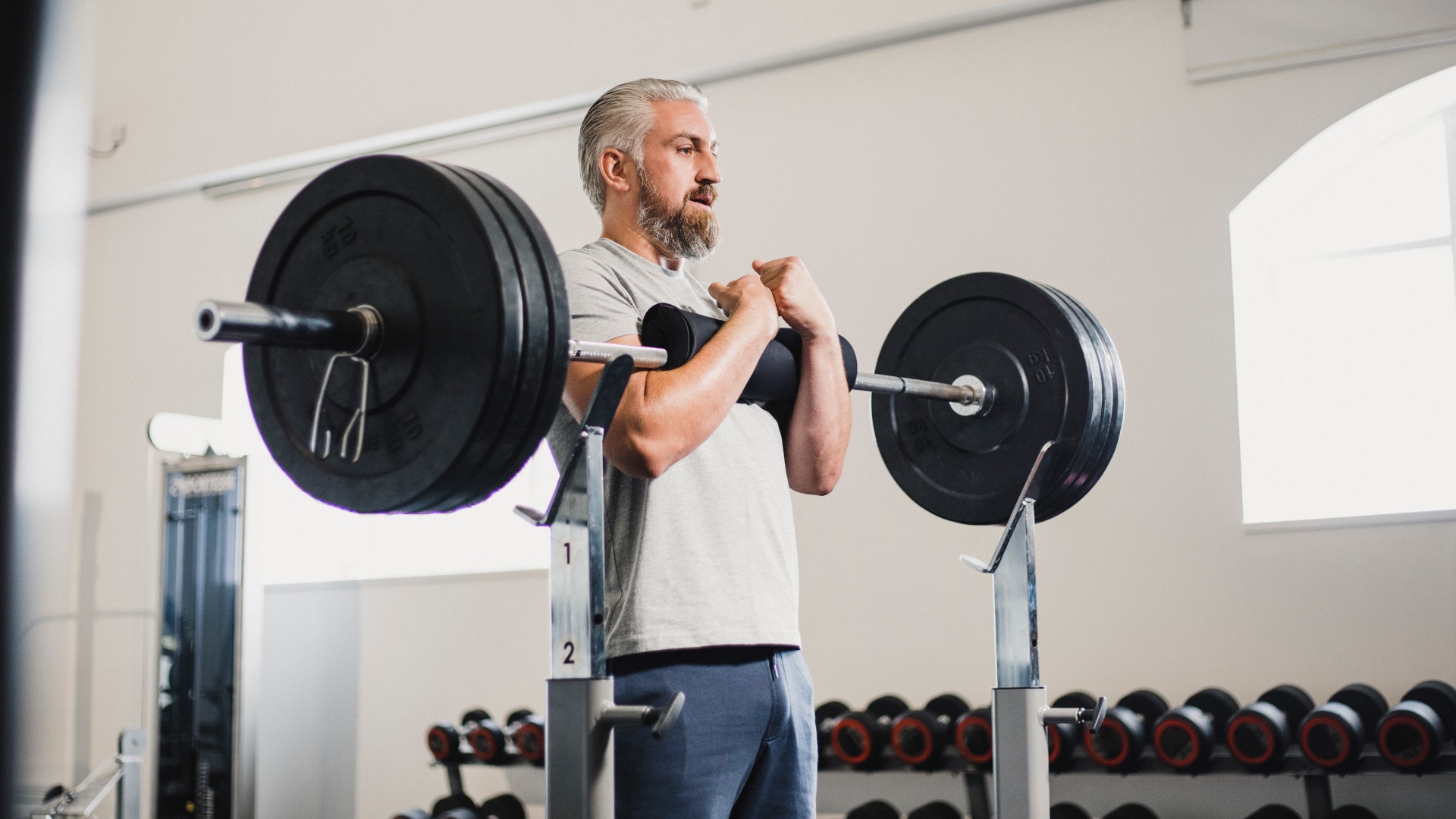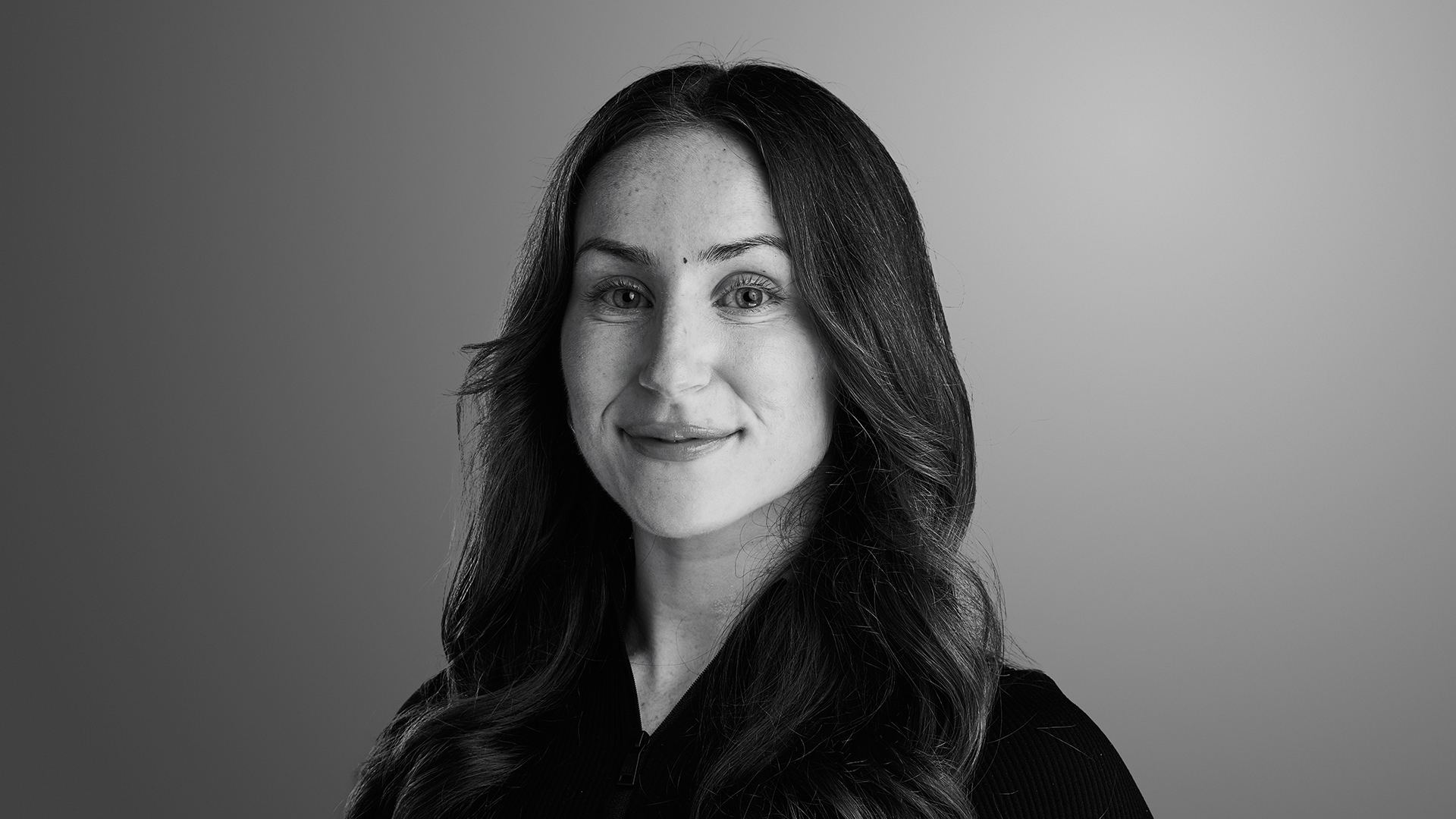

When it comes to leg day, the traditional barbell back squat is a staple in many people’s programmes. After all, it’s a fantastic compound exercise that works multiple muscles, including the glutes, hamstrings, quadriceps, adductors and calves. However, there’s many squat variations to choose from if you don’t enjoy traditional squats and one that you may not have heard of before is the Zercher squat.
It’s named after Ed Zercher, a Strongman competitor from America in the 1930s and, although a little more technical than traditional barbell squats, they can be a good variation for beginners. They also have some brilliant benefits too, from developing massive quads and bigger biceps, to being safer to perform alone in the gym, so if you’re looking to switch up your squats, it could be one to consider.
What are Zercher squats?
“Essentially, the Zercher squat is where you rest the bar in the crook of your arm,” says Joe Warner, author of The New Body Plan and Editor-in-Chief of Unfiltered. To perform the lift you’re therefore going to need a squat stands or a squat rack to get into position. The latter is a better shout for first timers as you can have the safety bars up for extra support. “It’s a super-effective lift that builds bigger, stronger and more powerful legs, as well as packing on serious biceps size and strength. What’s more, it even gives your core a solid challenge to help you sculpt six-pack abs.”

What muscles do Zercher squats use?
A lot! Just like regular squats, Zercher squats also work your quads, glutes and hamstrings. However, Joe explains there are a few added bonuses you get with Zercher Squats: “Because of the way you hold the bar, you’ll also train your biceps, and because you need to work hard to keep your torso upright and stable, it will also challenge your abs, core and lower back muscles too.”
Three reasons you should do Zercher squats
They’re safe to do alone
While the Zercher may come across as technically more difficult than the barbell back squat, it’s actually a safer lift, especially for beginners. “If you’re under a heavy bar and you fail, that can end badly if you’re not sure how to safely ditch the bar,” says Joe. “Zercher squats are comparatively safe because you’ll inevitably use a lighter weight than you would when doing a back squat. So, when you fail, it’s while using a 40kg lift, rather than 140kg.”
It encourages good technique
This is due to the weight being placed on the front of your body, as opposed to the back, which encourages you to stay upright and the ability to squat deeper. “You’ll naturally want to put your weight on your heels and mid-foot to counterbalance the bar,” explains Joe. “You’ll also want to keep your chest up to avoid collapsing forwards. The Zercher squat makes it easier to get into a really good start position.”
Extra core work
Again, as the weight is being placed on the front of your body for this squat, your core (and lower back muscles) are being challenged a lot more to try and stabilise the spine and keep it in that upright position. Otherwise, you run the risk of falling forwards. In turn, this will reinforce a strong posture, which can reduce the likelihood of injuries in the future, and a rock-solid abdominals.
Get all the latest news, reviews, deals and buying guides on gorgeous tech, home and active products from the T3 experts

How to do the Zercher squat
Keen to give a go yourself? Follow Joe's step-by-step guide below on how to master the Zercher squat:
- Position the barbell in a squat rack at just higher than waist height
- Position the bar on the crook of the arms, then take the bar out of the rack
- Stand tall before you start the rep, with your core braced
- Bend at the knees and hips to squat down, until your thighs are at least parallel to the floor
- Keep your weight on your heels and mid foot, not your toes
- Push through your feet to return to standing and squeeze your glutes at the top of the rep before repeating the exercise.
Tip: If the bar is hurting your arms, either wrap a towel around it or add on a barbell pad.

Bryony’s T3’s official ‘gym-bunny’ and Active Staff Writer, covering all things fitness. She is a certified personal trainer and also a part-time fitness instructor. In her spare time, you will find her in her natural habitat - the gym - where her style of training is a hybrid of bodybuilding and powerlifting. Bryony loves writing about accessible workouts, nutrition and testing innovative fitness products that help you reach your fitness goals and take your training to the next level.